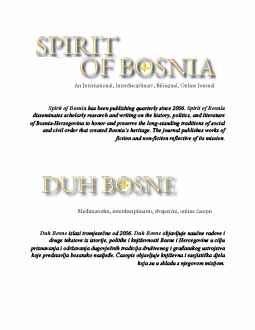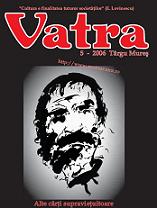We kindly inform you that, as long as the subject affiliation of our 300.000+ articles is in progress, you might get unsufficient or no results on your third level or second level search. In this case, please broaden your search criteria.



N. S. Leskov’s work “Soborjane” (Cathedral Folk) is examined in the context of old Russian traditions. A wide range of artistic form rarities is being researched: the genre, the style, the plurality of narrative instances, specificity of the artistic method and the definition of the genre – a novel chronicle. Each genre structure in the work has its own stylistic specialties, the specific connection between the artistic form and the content. The genre construction of the chronicle presents the leading tendency connecting all the parts of the novel into one unit.
More...
Tales are one of the most famous satirical works of M. Y. Saltykov-Shchedrin. Despite the name of the cycle, it includes a number of works, which by their formal characteristics are very different from the rest of tales of the cycle. One of these remarkable works is a “fairy tale” Night of Christ, which being almost devoid of the elements of fabulousness and magic belongs to another genre form. This article focuses on this “tale” in terms of the specifics of the plot, genre, composition and imagery. The author sets herself the goal to define the basis of features thanks to which this work is included in the cycle of tales and has a well-founded place among other tales.
More...
The article presents the analysis of various type making relationships of archetypes in the 20th century literature, it also deals with the specifics of writer’s inter¬pretation and mental transformation of an archetype in the context of diachrony versus synchrony. The author of the article tries to determine contacto-logical process of archetypes development, including their functions as information channels and as the basis for hypertext creation. Metaphor interpretations in a national context serve as the basis for archetype identification, metaphorical coding and decoding in the context of cultural synchrony and diachrony helps to create precedent phenomena, besides, it helps to create numerous hypertexts, which connect the past and the present of one culture as well as close and distant cultures.
More...
The author is concerned with the works of the great Latvian poet Edvarts Virza, and she concentrates on his poetic collection Bikeris (The Cup), which is a genuine and at the same time the only piece of work representing Latvian symbolism in "clear" form. Edvarts Virza subordinates human life to natural vegetation cycle and he integrates it into the higher structure of natural cyclization; it is the result of Virza's pantheism (pantheistic teaching), which identifies God with nature and understands nature as creative nature (natura naturans), not as nature created (natura naturata). The model of the relations between man and nature Virza encoded into the symbols of garden, flower, and cup. In accordance with the poetics of symbolism these symbols are multi-positioned; they have several levels and surfaces.
More...
The study is concerned with Paul Strauss's poetry which was written in the '30s in German language. It was Strauss's bilingualism that helped him deal with works of his German and Czech modernist contemporaries. His first collection of poetry Die Kanone auf dem Ei (The Gun on the Egg) was apparently inspired by global and local historical processes. In his second and third collection of poetry called Schwarze Verse (Black Verses) and Worte aus der Nacht (Words from the Night) respectively, the reflection of the world of inner experience became prominent. The fear of mother's death, which haunted him from the time of his childhood, is strongly pronounced. The uneasiness he felt after her death was enhanced by another existential uneasiness -- the revelation of his Jewish roots during WWII, although he was already Christianised at that time. The theme of Worte aus der Nacht is the search for a way out of the existential crisis.Similarly to Rilke, in Strauss's poetry one can find the first phase of poetic expression of the aesthetic ideal. Strauss encountered Rilke's work in its final phase, as a whole. In Strauss's times, i. e. between the two World Wars, the status of poetic expression is naturally confronted with a different reality. Rilke's Dinggedicht, which is related to Husserl's phenomenology, is concerned with a new view of looking at objects of the real world. The central theme of Rilke's relation to fright and beauty can also be seen in Strauss's poetics. Poetry means mainly a relation to oneself and by means of it to the world to Paul Strauss, as it does to Rilke and Valery. Strauss registers the outside world of things through his own inner experience. The motive of death, which is considered essential to Rilke's poetry, is the principal theme in Strauss's poetry, the initial impulse to write. The motive of death is also present in Franz Werfel's works, but not as an existential entity, as part of speculations about one's existence as is the case with Rilke and Strauss. Strauss is close to Werfel in motives of pain and childhood. One can also find common themes or motives in Rilke's and Strauss's poetry: death, God, time, loss, pain. Strauss came from Vienna to Prague at the beginning of the '30s (1932--37). He brought with himself a compact bound form, Rilkian "impressionism" and reflectiveness, Werfelian expressionism. To sum up, one can conclude that Strauss's collections of poetry, on account of their form, language and poetics, definitely belong into the context of Central European lyrical poetry.
More...
The study deals with the Hungarian writer Miklós Mészöly who, in his essays or comments on literary works, often pursues the dilemma of silence, pause or breaking off. The author of this study attempts to outline the relations of Mészöly's works (belonging to the period of the "turn of the narration" in Hungarian literature, and late modernism to postmodernism) with contemporary philosophical thought, accenting chiefly two notions from his works by which these relations are a priori expressed. The first of these notions is disposition (the term used in Hungarian literature is közérzet, in Heidegger's theory Befindlichkeit), as a content of everything that is perceived by an individual limited to particular time of existence -- on different levels of perception and knowledge -- and that is a part of his inner world. The second term is ontologizing prose -- which, according to the author, is an expression/translation of disposition into the mode of narration. In the name of authentic literature, omnipotence of the language is infirmed by silence, elision or pause -- ambivalence. Variants of literary pausing/silence can be found throughout Mészöly's life work on the poetic plane they are expressed by several types of figures of silence -- but there is a certain shift in the conception of these: 1. the first period (1950s -- beginning of 1970s) – in parallel with other textual techniques -- they emphasise ambivalence by the language of the given order and thus signalize the limits of language and knowledge, 2. the second period (from the middle 1970s) -- not ambivalence or relativity of interpretation of the world is expressed but disrupted hierarchy, in which, among the equalized signs, ambivalence is not visible.
More...
If we think about literary criticism in France and want to define its features, we have to know which criticism we are concerned with or how we define the position of the critic. It is best to look at the historical background of the origins of literary streams in the second half of the 20th century, and particularly at the contributions of its main representatives in terms of the bipolar terrain, i. e. in terms of the field of tension between journalistic and scholarly criticism. A significant breakthrough in the critical paradigm was Roland Barthes's essay Sur Racine and his polemics with Raymond Picard. At the end of the '60s, French literary criticism experienced a fruitful disturbance in which Jean Starobinski played an important role with his study Oeil vivant. In the '50s, Charles Mauron started publishing psychoanalytical studies. The French translation of Lukács's Theory of the Novel laid ground for the sociological approach, in which the main concern is about the relations between the society and the literary work. Lucien Goldman's approach was socio-critical. Pierre Bourdieu also contributed to the debate. Sociological thinking about literature gradually turned into sociological reading and reception aesthetics. In this regard, Jacques Leenhardt and Pierre Józsa's Lire la lecture was especially significant. At the same time, new criticism emerged. It was represented by Roland Barthes. The same impulses led to the formation of Tel Quel. At the beginning of the '70s, a new tendency started to develop. In literary handbooks, it has become known as genetic criticism. Journalistic criticism has always been concerned about current events. It has been influenced by the abovementioned streams only marginally. Besides judging a literary work, its main function is informative. It is distinct from scholarly criticism not only in its function, but also in its language. In a time of economic liberalism, scholarly criticism loses its veracity by emphasising its informative and advertising role.
More...
The cause of concentration of the auto-referential model of literature can be theoretically proved on disappearing referentiality. It can be proved also by means of insight into the work of La Pittura that mannerism is far more (post)modern than it could have appeared prima facie. Theoretical and methodological data are to be verified on particular interpretations so that they do not lose their legitimacy. This pays chiefly on newer theories, particularly on the system theory and deconstruction, which are only about to achieve their reputation in the interpretation practice and to prove their potential for working with literary texts. Irritation caused by both positions mentioned is obvious since they radically refuse the target principle of hermeneutics -- i. e. complete decipherment of the meaning of the text. Despite of this, both theories offer a notion inventory, which enables describing some phenomena of literary texts not possible to seize by means of traditional hermeneutic instruments. A meaningful interconnection of these two theories can even multiply this potential.
More...

